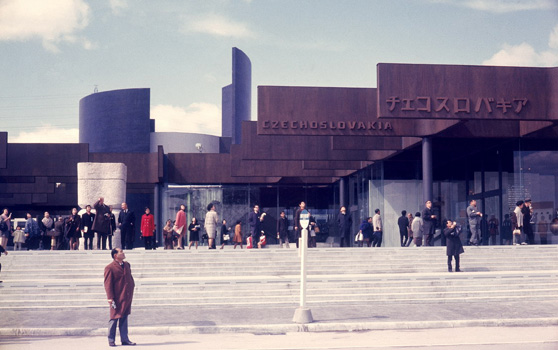The Czech Chamber of Architects (ČKA) has decided to award the ČKA Honor 2010 to the well-known Brno architect Viktor Rudiš. Rudiš ranks among the most significant personalities of Czech architecture in the second half of the twentieth century, primarily due to his design of the Lesná housing estate in Brno and the proposal for the unique pavilion of the Czechoslovak Socialist Republic for EXPO 70 in Osaka. The award will be presented in the spring of next year.
 |
| Pavilion of CSSR at Expo 70, Osaka, 1968–70, author's archive |












